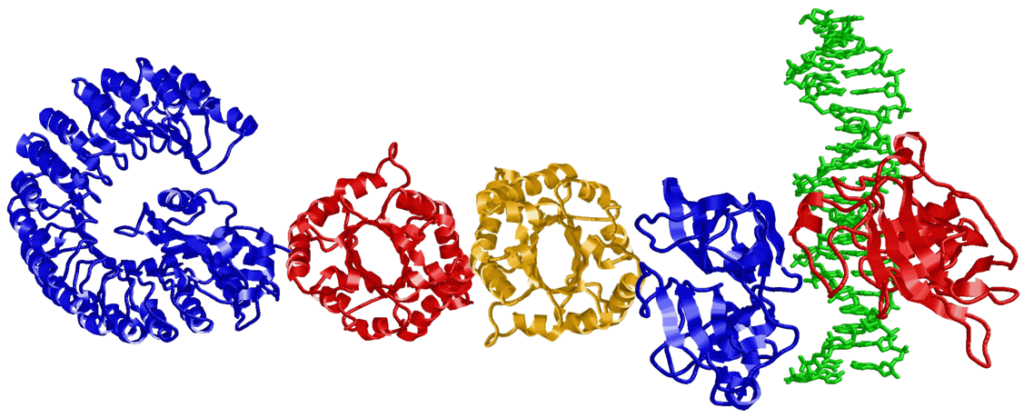You may write me down in history
With your bitter, twisted lies,
You may trod me in the very dirt
But still, like dust, I’ll rise.
Today’s Google Doodle pays homage to Maya Angelou, the famed African American poet and civil rights activist that captivated the interest of the nation with her potent voice on human rights. By clicking on the Doodle itself, the very first logo on the main home page of Google, you can hear her poem ‘Still I Rise’ read by a number of well-known figures such as Laverne Cox, Alicia Keys and Oprah Winfrey. Below the video, you can also see a translation of the text in whatever language your Google is set in. There has so far been over 2000 Google Doodles across the site’s homepage around the world.
The Google Doodle itself is sometimes overlooked but serves as the platform’s ‘thought of the day’, highlighting an individual, commemorating a day in history or politics, or marking a movement or sports event. Clicking on the title usually takes you to more entertaining pieces of information that can display a multitude of unusual facts. With 40,000 search queries happening every second worldwide on the platform, the scope of the audience that the Google Doodle can reach is phenomenal and points to Google’s ability to highlight important messages for a global audience. But Doodle can also vary by country – so whilst today most of the world are greeted with an image of Maya Angelou, users in Taiwan celebrate a doodle for Children’s Day 2018. The question that comes of this though is how and why are these Doodles chosen, and by whom?
The history behind the Google Doodle began in 1998 when founders Larry Page and Sergey Brin placed a stick figure man behind the second ‘O’ to mark the fact they were out-of-office, attending Burning Man Festival. It was so popular that increasing demands by the public turned the out-of-office message into a new means of informed news. Since then they have given the title of ‘Chief Doodler’ to a member of their ranks and have a well established team who frequently come together to choose which Doodle ideas make the cut, whilst also accepting submissions from users as to what dates should be celebrated.
Whereas the first Doodle was a lighthearted message, the kind that leaves some scoffing at Silicon Valley’s Finest parading around a fire in the desert scantily clad in some dystopian-looking goggles, the images have created a plethora of meaningful commemorations that come from the heart of the technology companies themselves. Comments from the company highlight that these ‘reflect Google’s personality and love for innovation’.
Whilst these days Google can celebrate things from hole punchers to solar eclipses, some might remember that it hasn’t always been like this. When attempting to look at the Google Doodle trends over time, the original thought process behind the lighthearted images firstly began to mark important yet well-known days of the calendar such as Christmas, Halloween and Bastille Day. It was in 2000 that the Google Logo featured a ‘VOTE’ flag to remind fellow Americans to hit the polls that day. For the next ten years, though a few birthdays make the cut, the general direction of the Google Doodle tended to commemorate national holidays that were already a large part of worldwide calendars.
It was only in 2009, that Google decided to commemorate International Women’s day for the first time – despite the celebration beginning its life back in 1975. It was also around this year however that the platform saw an increase in Google Doodles and a shift away from national holidays and more into obscure dates surrounding lesser-known individuals who have made their mark upon the world. Though it is difficult to spot any solid trends in the creation of doodles – for instance, the top trending logos in 2014 that were clicked on by users, were the World Cup, the Winter Olympics and the Rubik’s Cube – though after a quick search, the archives turn up empty for words such as ‘Holocaust’ so there are issues yet to be tackled.
The level of penetration these Doodles can achieve was seen in 2009 when the Doodlers decided to promote science-fiction writer H.G.Wells’ birthday. In a series of three separate doodles, the team also tweeted secretive messages such as ‘All your O belong to us’ and the latitudes and longitudes of where the alien landings that Wells wrote took place. Before the real celebration was revealed, the company claims victory for generating genuine speculation that Google had in fact discovered aliens, or that they had donated the ‘O’ of their logo to a non-profit organisation. In 2006, a logo that celebrated Louis Braille and his contribution to the blind lettering resulted in the traffic on a Canadian non-profit website for visually impaired people increase over ten times.
It must be no easy feat deciding upon an image that millions of people worldwide will be met with when they log onto Google in work, or when they check their phones first thing in the morning. The ability to influence global opinion is something that Google have creatively managed to play a unique role in. With a simple image Google provides information and celebration to history’s lesser-known figures whilst further highlighting the technology giant’s vast strength to reach even the least tech-savvy users. Though Google can dictate what facts appear ‘the most important’ for that day, one must at least see that this informative idea provides a great breather from the serious headlines just one click away.

